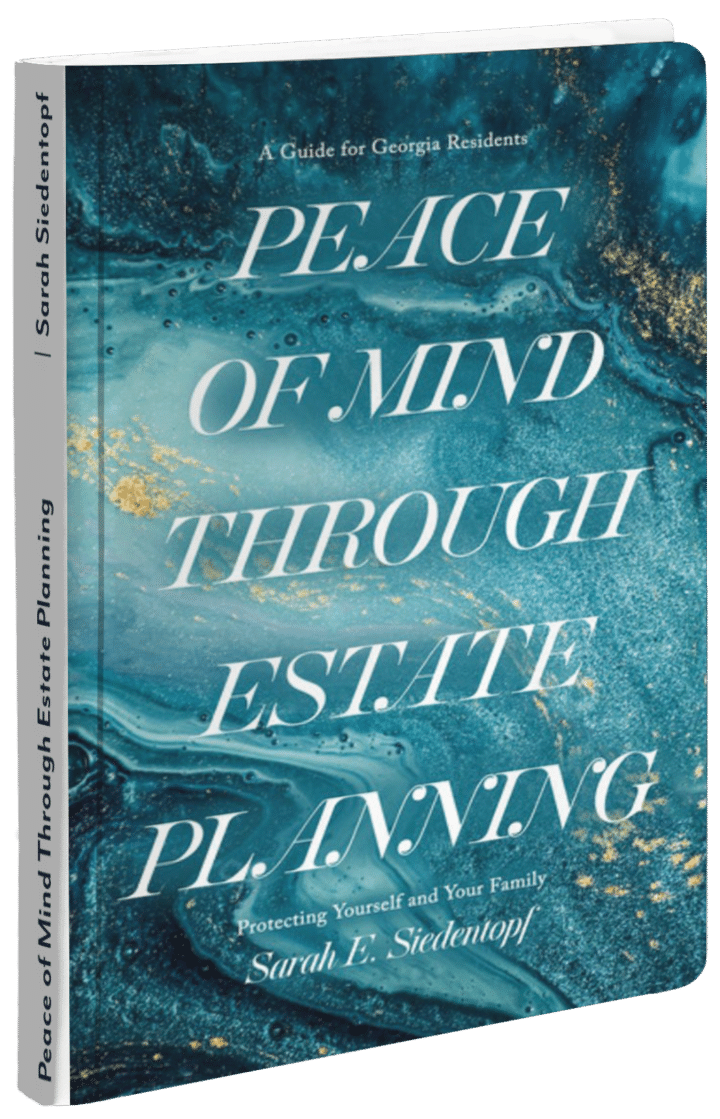Thanks for watching our video about how to choose the right Trust for your needs! We know estate planning, and especially choosing a Trust, can be a scary process. But we’re here to help! We can guide you to the best type of Trust for you and your loved ones.
Like Sarah said in the video, there are many misconceptions about Trusts. The first is that they are only for the rich. This is not true. Trusts can benefit individuals and families in any tax bracket. In fact, if you own any type of property, it is a good idea to consider using a Trust for estate planning.
So, let’s dive a little deeper into the world of Trusts.
What is a Trust?
As Sarah shared in the video, a Trust is a legal agreement between two parties, where one gives the other the right to hold property or assets on behalf of a third party. Let’s talk about the parties involved.
The grantor (or Trustor). This is the person who sets up the Trust. Their property and/or assets are going into the Trust.
- The Trustee. This is the person who will manage the Trust. They have a fiduciary duty to act in the best interests of the Trustor and future beneficiaries of the Trust.
- The beneficiary. This is the person (or people) who will receive the assets in the Trust at a set time. For estate planning purposes, that triggering event is generally the Trustor’s death.
A major difference between a Trust and a Will is that a Will takes effect only after your death, while a Trust begins a relationship between the parties immediately. When a grantor sets up their Trust, the Trustee begins managing the Trust immediately—acting on behalf of the beneficiaries. In many cases the grantor and the trustee are one in the same, while in others they are different.
See: How to set up a living Trust?
Why use a Trust for estate planning?
TrustTrust There are many benefits to setting up a Trust for your estate. Sarah outlined these benefits in the video, but we’ll list them here as well. The benefits include:
- Avoiding probate
- Maintaining privacy about assets
- Defining exactly when beneficiaries get assets (for example, when they turn 25)
- Ensuring a smooth transition of authority to the Trustee
- Potentially protecting assets from creditors
- Trusts provide more protection than a Will
- In many cases, Trusts cost less than a Will over time
While, there are many pros to creating a Trust, we would be remiss if we didn’t warn you of the cons. Setting up a Trust is a more complicated process than drafting a Will. It’s also important to note that the upfront costs of setting up a Trust are usually more significant than the cost of a Will.
TrustTrustTrustTrust(Check out our six-part video series on whether you need a Trust.)
Revocable vs irrevocable Trusts
There are two main types of TrustTrusts — revocable and irrevocable. All the other TrustTrusts we talk about will fall into one of those two categories, so let’s nail them down.
Revocable Trust
This is the most common type of Trust and what you’ve likely heard about when people refer to Trusts. The Revocable Trust, or theTrustrevocable living Trust, goes by this name because it is a Trust that can be revoked—meaning it can be changed or completed voided.
A revocable Trust is called that because it’s one that you can revoke. During your lifetime, you maintain control over the assets you place in the Trust. You can take things out of the Trust, modify the terms, or dissolve the Trust entirely. It’s up to you. You can revoke the Trust or make changes at any time during your lifetime.
So the biggest benefit of a revocable Trust (as opposed to an irrevocable Trust) is flexibility. You can do what you want with it until you pass away. You can name yourself the Trustee or co-Trustee and name someone else as the successor Trustee. They’ll take over when you die or if you’re unable to manage the TrustTrust because of injury or incapacitation.
Of course, if the Trust could be modified forever, there wouldn’t really be a point to having it. Once the revocable Trust’s grantor dies, the Trust becomes irrevocable. Now its purpose is solely to provide for the beneficiaries.
And like with most Trusts, the assets in a revocable Trust do not have to go through probate.
See: Is There a Downside to a Revocable Living Trust?
Irrevocable Trust
In opposition, an irrevocable TrustTrust, once made, cannot be revoked or modified — even during the life of the grantor.
Irrevocable Trusts are less common in estate planning. They’re used primarily as safeguards for sheltering assets from creditor claims, certain tax liabilities, or Medicaid.
Similarly to revocable Trusts, the grantor names a Trustee to manage these assets on behalf of the beneficiaries. However, the grantor cannot act as trustee of an irrevocable Trust. They must name someone else or an entity to act as trustee of the Trust. Often grantors will name adult children to serve as trustees of their irrevocable Trust.
Special types of Trusts
Many types of Trusts have specific utility to address a particular estate planning issue. These are some of the most common:
Charitable Trust
Charitable Trusts are irrevocable Trusts that allow you to pass assets along to a charitable organization in one of two ways.
The first is a Charitable Lead Trust. A Charitable Lead Trust allows you toset aside certain assets for a specific charity. After those assets are distributed to said charity, the remaining assets go to your other beneficiaries.
The second is a Charitable Remainder Trust. A Charitable Remainder Trust allows you to receive income from the assets you placed in the Trust while you are alive. When you die, the remaining assets pass to the charity.
Spendthrift Trust
A spendthrift Trust is the perfect option for grantors who want to leave assets to a beneficiary but are concerned about that beneficiary’s maturity or ability to manage the money.
With a spendthrift Trust, the beneficiary has only restricted access to the funds in the Trust. Depending on the terms of the Trust, the beneficiary may get a regular payment from the Trustee, have to ask the Trustee for funds, or have to ask the Trustee to purchase things for them with the funds in the Trust.
Because there is restricted access to the Trust, the assets in the Trust are also protected from creditors. That makes it a particularly useful option for beneficiaries who have a history of running up debt
See: Trusts for Beneficiaries with Financial Issues
Special Needs Trust
Leaving money to someone with special needs can be a complicated endeavor. A grantor may want to make sure their disabled child has every advantage and provide for them in their Will or a Trust.
Unfortunately, an inheritance can make a beneficiary ineligible for government assistance, like Medicaid or supplemental security income — even if the inheritance isn’t enough to cover the costs that those benefits help with.
To get around that issue, special needs Trusts leave assets in the control of a Trustee, not the beneficiary. Because the beneficiary doesn’t have control over the funds, the funds are not considered for the purposes of government program eligibility.
The Trust ends when the beneficiary dies or the Trust is empty, whichever comes first.
Testamentary Trust
Unlike the other Trusts we’ve discussed, a testamentary Trust exists as part of a Will.
A testator (the drafter of a Will) may include instructions to set up a testamentary Trust when they are planning to leave assets to someone that will not be able to manage them. The most common examples are minor children or adults with disabilities.
Once the testator dies and their Will goes through the probate process, the testamentary Trust is created.
The Trust creates conditions for the beneficiaries’ inheritance of the assets in the Trust. For instance, a minor may not get access to the Trust assets until they turn 25. The Trust could have further restrictions — until they turn 25, they cannot use the funds at all. Or until they turn 25, they can only use the funds for educational purposes.
Why use a testamentary Trust instead of a traditional living Trust? Some people choose a testamentary Trust because it requires less maintenance during their lifetime. It’s only established once they’ve died.
See: At What Age Should My Child Inherit Money?
Generation-Skipping Trust
Generation-skipping Trusts are irrevocable Trusts used primarily for their tax benefits.
They do exactly what they say— skip one generation (generally, the grantor’s children) to pass assets along to the next generation (generally, the grantor’s grandchildren).
Of course, some people may be motivated by a deep love for their grandchildren. But grantors generally use these Trusts so their family can avoid paying estate tax twice. For instance, with a traditional living Trust, the children would inherit. If the amount of their inheritance surpassed the estate tax exemption, they would have to pay taxes on it. If they then passed their assets along to their own children in an amount that also surpassed the estate tax exemption, their children would have to pay taxes on it.
For families that have significant generational wealth, a generation-skipping Trust can help keep more of that wealth in the family.
If you have read this far, you now understand a LOT more about Trusts than before. And you may be feeling overwhelmed by your options. That’s okay and that is normal! We are here to help. We are here to learn about your financial and family situation and help guide you to the best estate planning tools to reach your end goals. Don’t try to figure it out alone! Let us help. It’s our job and we’re really good at it.
To schedule a consultation visit our website or call us at 404-736-6066.








